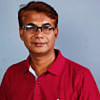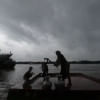Move to check groundwater depletion
After years of neglect and a bit of experiment, the government is set to make rainwater harvesting mandatory.
According to a draft of the revised Bangladesh National Building Code (BNBC), which is waiting to be vetted at the housing and public works ministry, every building with a rooftop of 300 square metres and above must have the means to conserve rainwater and a well to recharge aquifers.
The housing ministry in a circular on May 6 said every 500sqm or above building in the capital's Tejgaon Industrial Area must have the arrangements.
The process includes collecting and storing rainwater for future use and injecting some of the water into the underground aquifers through specially designed recharge wells.
Experts say the process reduces groundwater depletion. Many countries across the world, including India, have been harvesting rainwater and recharging the aquifers.
To make sure only fresh rainwater is recharged into aquifers and qualified plumbers are involved in the process, the revised BNB code said rainwater harvesting system should not be installed without permission from the Rajdhani Unnayan Kartripakkha (Rajuk).
“An application for a permit for rain water harvesting and drainage work shall be submitted.... by a licensed plumber and the [building] owner or by their appointed person or agent....” reads the code.
Taqsem A Khan, managing director of Water Supply and Sewerage Authority, said installation of each groundwater recharge system would cost around Tk 5 lakh.
“If all government buildings follow the [revised] building code, 20 to 30 percent areas of the city [Dhaka] will be covered,” he said.
The groundwater table of the capital has dropped in recent years as Wasa installed more deep tube wells every year to quench the thirst of ever-increasing number of residents of the world's one of most densely populated city.
According to Wasa, around 80 percent of its supply comes from groundwater extracted through 805 deep tube wells and around 20 percent from four plants that treat surface water at Sayedbad and Chandnighat in Dhaka and Godnail and Sonakanda in Narayanganj.
“Over 2,000 authorised private deep tube wells across the city are also extracting groundwater. And there are around 2,000 illegal ones,” said a Wasa official preferring not to be named.
He added that the Wasa provides about 235-40 crore litres a day.
The approach, similar to drawing money from a bank without making an effort to deposit, is alarmingly depleting the aquifer.
According to a Bangladesh Water Development Board report, the average rate of annual groundwater decline in different parts of the city was 0.17 metre to 0.6 metre from 1970 to 1980; 0.15 metre to 0.69 metre from 1980 to 1990; 0.56 metre to 2.26 metre from 1990 to 2000 and 1.24 metres to 3 metres since 2000.
Anwar Zahid, director of groundwater hydrology at BWDB, said the reasons behind the declining groundwater are excessive extraction, filling up of low lands, canals, water bodies and unplanned urbanisation.
Artificial recharge into the aquifers is imperative if people want to prevent the aquifers from dropping to a critical level, he added.
The excessive use of groundwater is quite interesting in a country which is cobwebbed by so many rivers, including a few of it flowing right through the heart of the capital.
But due to excessive dumping of human and industrial waste the water of the Buriganga river has become toxic beyond the use for domestic purpose, said a Wasa official.
Unplanned dumping of sewage, household and industrial waste, in the rivers and other water bodies, makes it difficult for Wasa to use surface water, resulting in its dependency on groundwater, the Wasa official added.
Mohammad Abu Sadeque, member secretary of the revised building code steering committee, said people in urban areas depend on ground water, instead of surface water, and that was the reason why the water tables in cities are going down.
Sadeque, also former director of Housing and Building Research Institute, feared that trees and forest would also not get proper nutrition if groundwater keep depleting. He also said it had to be ensured that groundwater recharge is done in a scientific way.
Dhaka Wasa in 2009 began a pilot project, titled "Artificial Recharge from Rainwater" at 10 places of the city. The places are Lalmatia, Mirpur, Uttara, Segunbagicha, Banani, Gulshan, Khilgaon, Motijheel, Mohammadpur and Gandaria said a Wasa official.
Under the project, rainwater is being harvested, filtered and sent to aquifers through wells on a limited scale, the official said. The Institute of Water Modelling (IWM) is carrying out a field analysis on groundwater recharging of those sites, the report of which is yet to be submitted.

 For all latest news, follow The Daily Star's Google News channel.
For all latest news, follow The Daily Star's Google News channel. 





Comments